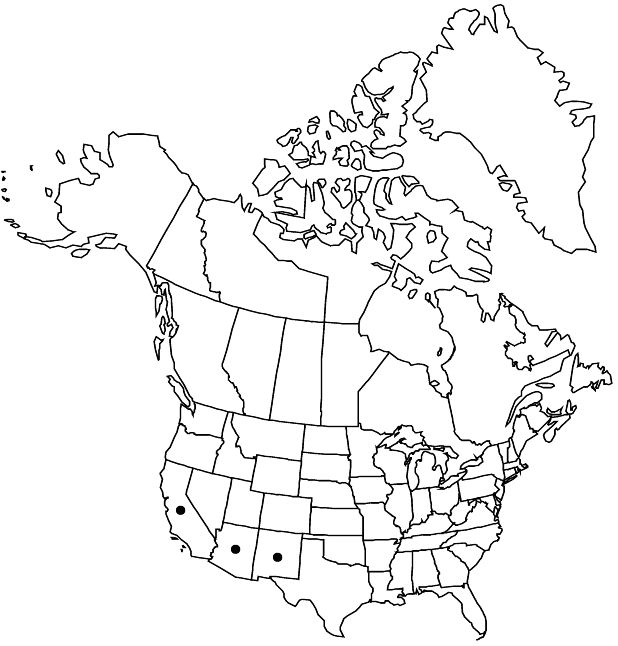Simmondsia chinensis
Ill. Handb. Laubholzk. 2: 141. 1907.
Shrubs to 2(–3) m, mostly densely branched; young branches hairy. Leaves dull pale green or gray-green, sometimes glaucous; petiole 0–2 mm; blade elliptic or oblong-ovate, (1.5–)2–5.5 × (0.5–)1–3 cm, thick-leathery (often becoming wrinkled when dry), base acute to obtuse, apex rounded, obtuse, or acute, surfaces sparsely hairy to glabrate. Staminate inflorescences: peduncles 0.2–2 cm, recurved; cymes 1–2 cm diam. Pistillate inflorescences: peduncle (pedicel in solitary flowers) 0.2–2 cm, recurved; bracts 3–4, linear-lanceolate or lanceolate, 2–10 mm. Pedicels: staminate 0–2 mm, pistillate usually absent. Staminate flowers greenish yellow; sepals 2–4 mm, densely hairy abaxially; stamen filaments 0.1–0.3 mm; anthers 1.5–2 mm. Pistillate flowers pale green, pendent; sepals (in fruit) triangular-ovate, basal 1/2 appressed, distal 1/2 abruptly narrowed and spreading, 1–2 cm, surfaces densely hairy; styles exerted. Capsules shiny greenish brown, 15–25 × 9–11 mm, apex rounded, usually apiculate. Seeds reddish brown or brown, 13–17 mm. 2n = 26.
Phenology: Flowering late winter–spring; fruiting summer–fall.
Habitat: Desert scrub, coastal sage scrub, alluvial fans, arroyo margins, rocky, gravelly, or sandy slopes.
Elevation: 0–1500 m.
Distribution

Ariz., Calif., Mexico (Baja California, Baja California Sur, Sonora), introduced elsewhere in North America, South America, Asia (Middle East), Australia.
Discussion
In the flora area, Simmondsia chinensis is native to arid areas of southern California and Arizona (despite its specific epithet, it is not native to China). It is very drought tolerant and able to withstand extreme daily temperature fluctuations. Its thick, leathery leaves are usually held erect, maximizing interception of solar radiation during the cooler part of the day and minimizing it during the heat of midday. Flowering and fruiting times are dependent on timing, duration, and intensity of the winter and spring rains, but generally flowers are at anthesis March to April and fruits mature about six months later. Flower buds are initiated during development of new leafy shoots in winter and generally remain dormant until early spring (or longer under drought conditions). Capsules may reach full size several months before the seeds mature and disperse.
Simmondsia chinensis is cultivated as a commercial crop in desert and semidesert areas (Australia, North and South America, and the Middle East) for its oil-rich seeds. Jojoba oil is an unusual liquid wax ester, more similar to whale oil than it is to most vegetable oils, and is used primarily in cosmetics. The evergreen foliage is important as year-round forage for livestock and wild animals, and the fruits are eaten by wild mammals and birds.
Selected References
None.
